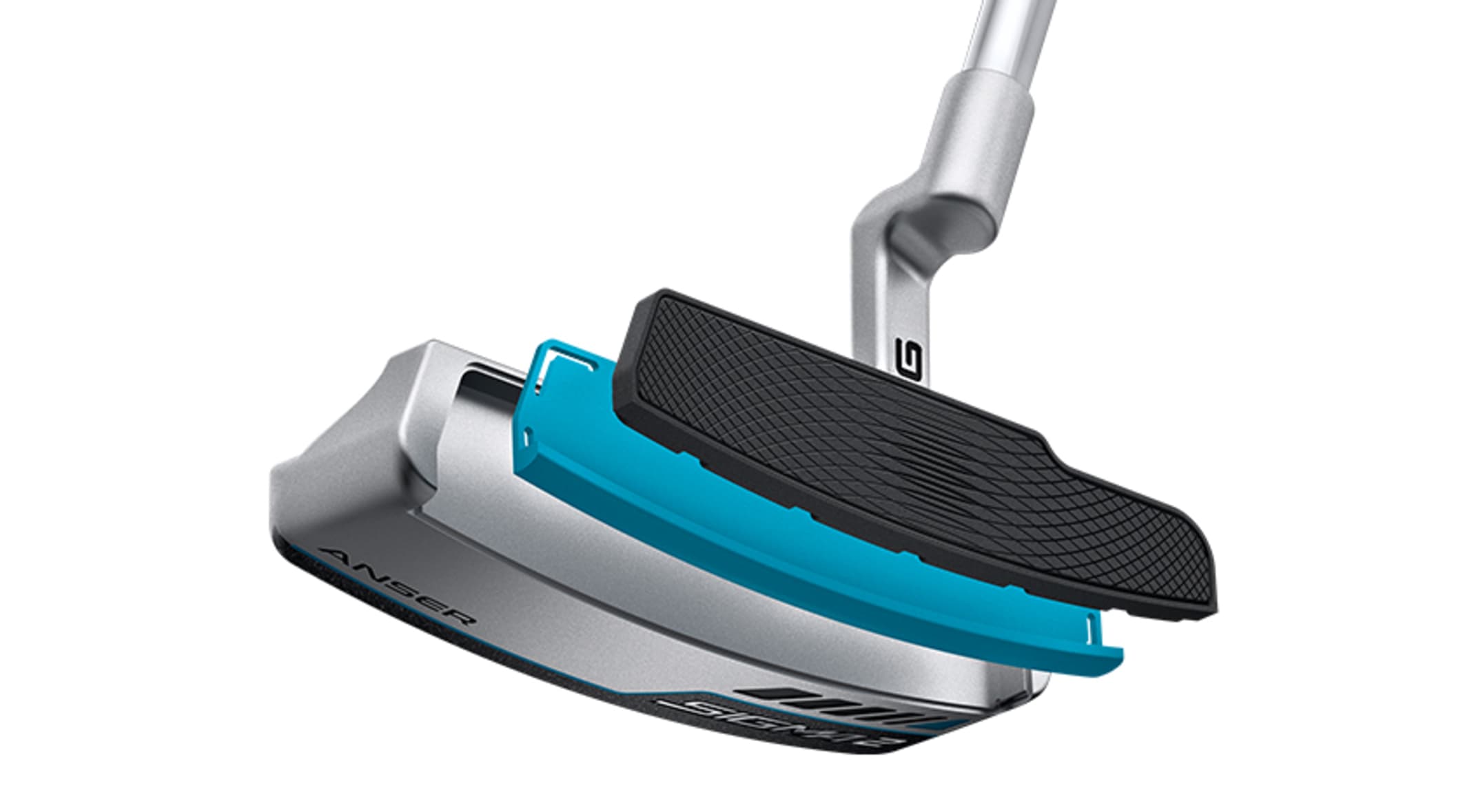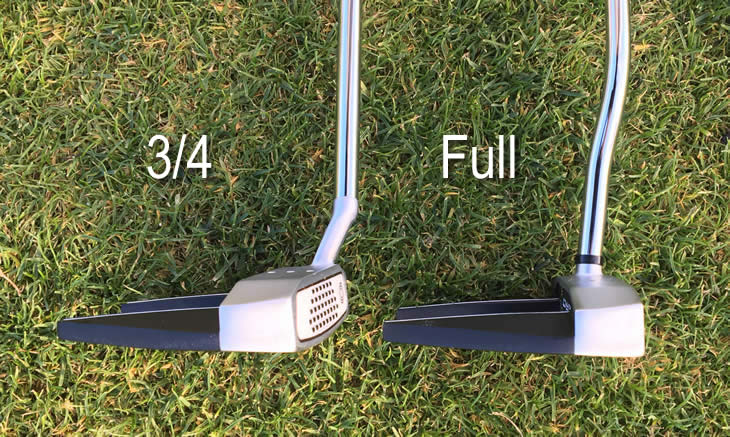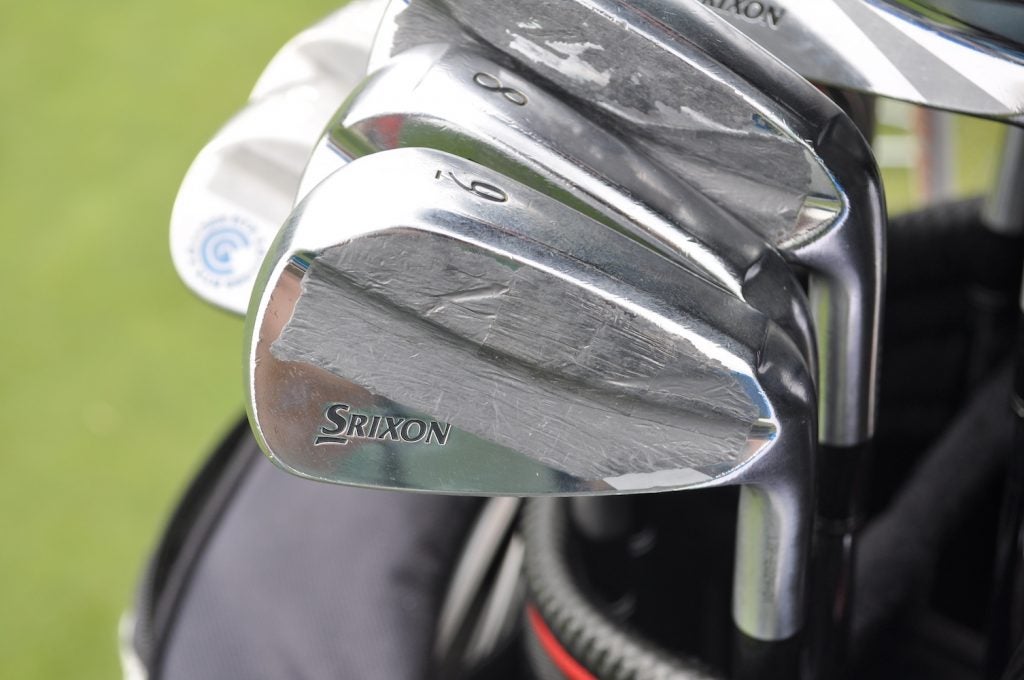When most golfers think about custom fitting, they think about drivers. The experience can be magical. A player and a trained fitter tinker with different head and shaft combinations, tweak lofts and adjust moveable weights. Presto, the ideal combination adds 15 yards of distance off tee and the golfer is hitting straighter shots.
Putters, on the other hand, rarely come to mind. That’s a huge mistake. Elite golfers will use their driver, typically, fewer than 10 times in a round but roll 27 to 30 putts. Weekend players may reach for their driver more often than pros, but they putt more too, often up to 35-40 times per round. A custom fit putter that augments your natural stroke can enhance your chances of performing better on the greens and lower your scores.
If your putter is a standard off-the-shelf selection and you want to increase the head weight because it feels too light, a quick method is to use lead tape. Steve Stricker added lead tape to his Odyssey White Hot 550 to put it at D-2 swingweight. Swing weight is a static balance, and based on the amount of weight needed, hung from the very tip of the grip end of the club to get it to balance on a sharp edge (fulcrum) positioned at 14-inches from the end of the grip. As you can imagine, a heavier grip on your club will require less weight added to the butt end to get it to balance on the. Lead weight is the way to go to get the right swing weight. Another option would be finding a lightweight putter grip to increase the swing weight. Golfworks sells rubber coated tungsten squares that might be more visually appealing on top compared to lead tape but that depends on your preference. In simple terms the moment of inertia is the measure of a putter's resistance to twisting on off-centre hits. The greater the moment of inertia, the less the putter blade rotation and loss of energy. The way to increase the MOI of a putter is to move weight away from the centre of gravity (CG).
If you recently read my story on Arccos Caddie Strokes Gained Analytics, you know I’m an average player. My handicap is 13, and while I would love more distance and accuracy off the tee and need to sharpen my iron game, I’m a decent putter. But when Club Champion asked if I would like a putter fitting, I jumped at the chance. Here’s what I learned.
Safety first
I had not taken three steps inside Club Champion’s Hartford, Connecticut, faculty before Mitchell Becker, a PGA of America professional and my fitter for the morning, asked me to use some hand sanitizer. He also used some while we talked, and like me, he wore a mask. Becker explained that every morning before the store opened, it was thoroughly cleaned. Aside from fist-bumping instead of shaking hands, everything about the fitting experience felt the same as fittings before the COVID-19 pandemic. I felt very safe.
Know thy stroke
Before we did anything, Becker measured my putter and learned it is 34 inches in length and has 3 degrees of loft. That would be our starting point.
Launch monitors like TrackMan and Foresight do a great job revealing things like the launch angle, spin rate and ball speed you create with a driver off the tee. On the green, technology can show you data points and tiny details about how you aim, your stroke’s path and what is happening at impact.
Science & Motion’s SAM PuttLab is the device of choice at Club Champion. After attaching a small plate to your putter’s shaft, the Y-shaped machine uses ultrasound to track the club as it moves. Calibrating it using my putter took about 15 seconds, and putting from a predetermined spot on the artificial green, it collected information as I made seven 10-foot putts. Becker quietly studied my posture and alignment while standing about 10 feet behind me. The SAM PuttLab analyzed everything else.
It turns out my aim is good. On average, my putter’s face was pointing only 0.5 degrees to the hole’s right at address. Becker said he had seen golfers who aim as much as 10 degrees away from the cup.
Coming into impact, my putter does not swing straight through the ball. Instead, it rises an average 1.7 degrees.

Tiger Woods Putter Swing Weight
Many people do not realize that the ball’s weight creates a tiny depression in the green and that a putter’s loft is designed to get the ball out of that depression. Too much loft can make the ball hop, but too little loft will drive it into the ground.I have a slight forward press, so while my putter has 3 degrees of loft, the playing loft at impact usually is 2.1 degrees. Luckily, my combination of effective loft and rising swing was good.
SAM also revealed I have a moderately arced stroke. The head swings to the inside of my target line on the takeaway and on the follow-through. As I make my backswing, it also showed the face opens an average of 7.4 degrees, and it closes an average of 15.7 degrees on the follow-through. In other words, it’s rotating, but at the most critical moment – impact – it was open 0.6 degrees to the right. Again, that’s pretty good. That combination of arc and rotation indicated that a face-balanced putter would be wrong for me, but that either a blade or mallet-style putter with 30 to 45 degrees of toe hang could be an option.
Length and lie angle are critical
While I holed six of the seven putts the SAM device studied, it showed I made contact slightly toward the toe of the face on all but one putt and that the toe of my putter was elevated by about 2 degrees. In the ideal setup, the putter should be flat.
At impact, the lie angle was 68 degrees. By flattening the lie angle to 67 degrees and adding an inch in length to the club, the impact spot could be shifted more to the center of the face for improved consistency.
Becker bent the lie angle of the putter I was using 1 degree flatter, but I could not see any difference at address. Then he handed me a putter with the same specs but that was one inch longer. I felt the difference immediately. It was only an inch, but I felt more upright and more comfortable. However, because the lie angle was ideal, my eye position over the ball was in the same location, so my aim was not affected.
In 20 minutes I had learned that I need a putter with 30-45 degrees of toe hang, 3 degrees of loft, a length of 35 inches and a lie angle of 67 degrees. After that, everything is my preference.
Grips, alignment aids and customization
Once you know what you need, a good custom fitter can help you sort through the scores of putters on the market that are viable options.
So, what putter did I get? In the end, I opted to keep the same heel-toe-weighted blade that I walked in with, but with a few modifications.
The putter was given a longer shaft, a small amount of extra weight was added to the tip section to increase the swing weight and I switched to a new midsized grip.
I walked into my putter fitting with a club that pretty closely matched my stroke and walked out with an even better one.
Home | About | About this Site | Contact | Site Search
An acronym for Moment of Inertia.
The Moment of Inertia (MOI) of a putter is a measurement of its resistance to twisting on off-centre hits. The greater the figure, the more stable your putter will be. |
Techno-talk
It is the techno-talk manufacturers use to promote their putters. In simple terms the moment of inertia is the measure of a putter's resistance to twisting on off-centre hits. The greater the moment of inertia, the less the putter blade rotation and loss of energy.

The way to increase the MOI of a putter is to move weight away from the centre of gravity (CG). In other words you redistribute the weight away from its balance point.
Hanger Test
DaveTutelman gives the example of two identicallyweighted coat hangers suspended by a piece of string. If you tap the centre ofeach hanger it will swing back and forth, but not twist.
However, tap the end of each hanger and the hanger with theweights close to the centre of gravity will rotate faster than the hanger withthe weights spread apart.
Putter Head Weight Chart
Although both hangers have the same mass,their weight distribution is different, and this affects their moment ofinertia.
Ping Anser Putter
In 1966 Karsten Solheim used this principle of physics to create what became known as the Ping Anser putter.
By taking away the mass at the centre of the putter through a cavity back and redistributing it at the heel and toe of the putter, he improved the playability of his putter.
Putter Swing Weight Increase Chart
MOI Bandwagon
Other manufacturers have joined the MOI bandwagon either by copying Solheim's design or with big-headed mallet putters with extreme weighting away from the centre of gravity.
Bobby Grace Putter Design |
MacGregor Golf produced an elongated putter, the Response ZT 615, which was used by Jack Nicklaus to win the 1986 Masters.
Increasing the heel to toe length helps stabilise a putter at impact in much the same way as a tightrope walker uses a long balancing pole.
Sweetspot Contact
The Moment of Inertia of a putter would be irrelevant if golfers were capable of consistently contacting the ball on the putter head's sweetspot. Because they can't, the effect of off-centre hits can be minimised through design.
However, whatever the manufacturers say, you can't enlarge the sweetspot - you can only enlarge the area of forgiveness. How significant this is for distance and directional control is a matter of opinion.
Scatter Pattern
Scatter of Hits |

Frank Werner and Richard Greig in their book How Golf Clubs Really Work and How to Optimise Their Designs concluded that the scatter of hits on the face of the putter (pattern error) for a typical golfer have a surprisingly small effect on most putts.
Far more important were errors in alignment angle and squaring the putterface to the target.
Summing UP
So what does this all mean to you? In all probability you are more likely to miss putts for reasons other than the moment of inertia of your putter.
Besides weekend golfers wouldn't have a clue what the MOI of their putter is, or even what moment of inertia means.
If you putt with a recognised make and model of putter that has been custom-fitted for you, your focus for improvement is best directed to working on the different skills of putting.
A change to another putter based on its comparative moment of inertia is probably not warranted.

Image Source
1 = www.bobbygraceputters.com
2 = Adapted Drawing from How Golf Clubs Really Work and How to Optimise Their Designs
